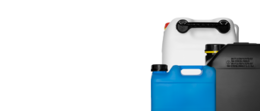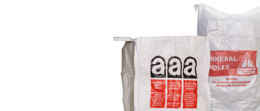Material Information
Tinplate
is a very versatile packaging material. In addition to food and luxury foods, pet food, paints and varnishes and other everyday items are also packaged in tinplate. Tinplate is also used to make closures, for example for glass bottles. The advantages of tinplate as a packaging material are manifold:
- Tinplate is an ecological packaging material. It is one hundred percent recyclable, as often as required and without any loss of quality.
- As packaging for chemical-technical products, it offers a high degree of safety.
- External influences such as dirt, pests or bacteria are completely kept out by tinplate packaging. This also applies to environmental influences such as moisture, oxygen, light or foreign odors, which can severely impair the quality of the contents.
In addition to tinplate packaging in the food and luxury food sector, which accounts for by far the largest share, the chemical-technical packaging application area makes up the second largest share of tinplate used in Germany. Bottles, cans, canisters, buckets, hobbocks and aerosol cans are produced for a variety of filling goods such as paints, varnishes, building protection products, mineral oil products, adhesives and binding agents as well as cleaning, care and maintenance products. Hazardous goods packaging plays an important role in this segment. At a time when environmental awareness and sustainability are becoming increasingly important, companies are striving to use environmentally friendly packaging materials. Tinplate, also known as tinplate or galvanized sheet, is one of these materials and offers many sustainable advantages.
Production:
The production of tinplate is an environmentally friendly process that consists of the following steps:
1) Iron production: iron ore is processed into pig iron in blast furnaces at high temperatures.
2) Steel production: The pig iron is decarburized and alloyed to produce steel, which serves as the starting material for tinplate.
3) Galvanizing: The steel is coated with a thin layer of zinc in a continuous process to protect it from corrosion.
4) Further processing: The galvanized sheet is rolled and, if necessary, coated or painted to prepare it for special applications or to improve food safety.
Sustainable benefits:
Tinplate offers a range of sustainable benefits that make it the ideal choice for companies in the packaging industry:
- Recyclability: tinplate is 100 percent recyclable and can be recycled without any loss of quality. This reduces the amount of waste and conserves resources.
- Durability: Tinplate packaging is extremely durable and protects the contents from external influences such as light, moisture and oxygen. This extends the shelf life of the packaged products and reduces food waste.
- Energy efficiency: The production of tinplate requires less energy than the production of sheet steel or other packaging materials such as aluminum or plastic. In addition, energy consumption can be further reduced by using recycled tinplate.
- Lower CO2 emissions: By using tinplate as a packaging material and recycling it, CO2 emissions are reduced compared to other packaging materials, thus helping to reduce the greenhouse effect.
- Lightweight: Tinplate is a lightweight material that helps to reduce transportation and associated emissions.
- Versatility: Tinplate can be used for a variety of applications in the packaging industry, including food, beverage, cosmetics and pharmaceutical packaging. It can be easily shaped and printed to meet individual customer requirements.
Applications:
Tinplate is a preferred packaging material in many industries due to its versatile and sustainable properties. Below are some applications of tinplate in various industries:
- Paints and coatings: tinplate cans provide an excellent barrier against oxygen, moisture and light, maintaining the shelf life and quality of paints and coatings. They are also easy to seal and reseal.
- Chemical products: Tinplate packaging protects sensitive chemical products from external influences and ensures safe storage and transportation.
- Pharmaceutical products: Tinplate provides a safe and hygienic packaging solution for medicines, tablets and medical devices. It protects the sensitive contents from environmental influences and contamination.
- Building materials, manufacturing and trade: Tinplate can be used to package building materials such as sealants, adhesives and fillers. It protects these materials from drying out and ensures their shelf life.
- Disposal/recycling: Tinplate is 100% recyclable and can be reused several times in the recycling process, which helps to conserve resources and avoid waste.
In conclusion, tinplate as a packaging material offers a sustainable solution that makes both ecological and economic sense. Packaging industry players are encouraged to transition to tinplate, leveraging its notable attributes such as high recyclability, robustness, energy efficiency, reduced carbon emissions, lightweight nature, and adaptability. Adoption of tinplate can facilitate companies in diminishing their environmental impact, prolonging the shelf life of products,








